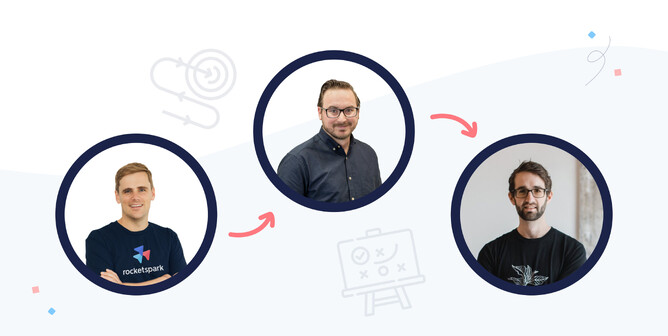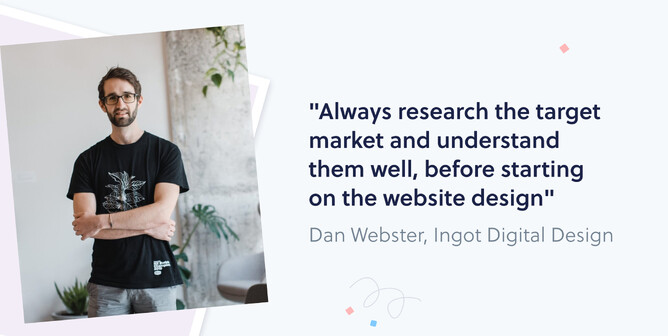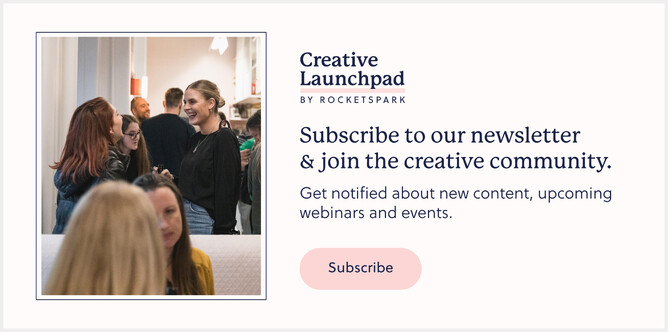Is your website design strategy a little light? Or do you need some fresh strategic insights?
You already know the value websites can provide and how, but maybe you’re having trouble knowing where to start with planning a really high impact website beyond just laying out content and pictures so it looks nice.
With the help of one of our top design partners, and our own Rocketspark experts, let’s dive past the skin deep beautiful websites into the high impact substance that makes for an ever engaging website experience.
Remember who your audience is
Jason Tiller, Rocketspark Head of Partnerships, has a lot of experience in website strategy from his years in marketing agencies.
Jason believes one of the most important things to remember when creating a website strategy is that the website is not for you, it’s for your customer.
“You are most likely going to be using your website to appeal to a different demographic than the one you fit in to. Always design and think about strategy from an audience perspective.”
“From a website strategy perspective, definitely think about who your audience is, think about their goals, and think about your goals. For example if you own a restaurant, your goal is to attract customers, their goal is to find out what time you open and what there is to eat. So, from an experience perspective, you need to think about how to make it as easy as possible for them to be able to do those things.”
Jason says a lot of the strategy comes down to insights and doing market research.
“It’s important to talk to previous customers, ask why they chose you and what were the things that made them want to buy your product. You can then think about what those things were, whether or not they are applicable to website context and whether you can make those things happen on the web.”
Another really important part of website strategy, Jason says, is making sure you are clear in the website's purpose, because that helps guide the whole process.
“If we think about a funnel, your website is sitting at the top, and it’s filling up the funnel with potential customers. You want to make sure the funnel isn’t leaky, meaning it needs to be engaging and giving your audience exactly what they are looking for.”
Look for inspiration
Jeremy Johnson, Rocketspark Head of Product, is the creative behind the Rocketspark website and is always considering website strategy.
“One of the things we are focussing on with the visual identity development of a new look for Rocketspark is using guiding values and principles which influence the look of the design.”
Jeremy says the words that are guiding these changes are carefully curated, to the point he even got each word's definitions from the dictionary to make sure they were the right fit.
“Something else people often do when working on brand strategy is create mood boards or inspiration boards, this is something we’ve done at Rocketspark that has been quite transformative for us.”
Jeremy says he’s been using curated collections of web design inspiration examples to help Rocketspark with web design lately.
“At Rocketspark we use our collections of web inspiration as a ‘pantry of ingredients’ (a term I recently learned thanks to designer-illustrator Loryn Engelsman) to influence the creation of our own ideas. Not to copy the inspiration directly, but more to be influenced by illustration style, colour balance, and typography. Individual elements that, when combined in your own design, don't look like a carbon copy of your collection of inspiration across dozens of websites.”
Jeremy says another key thing that Rocketspark has done was create a persona of its ideal customer.
“We give them a name, age, likes, dislikes, brands they like, etc. This helps you get inside the mind of who you are trying to cater to with your brand. While you might serve a diverse range of customers, it's difficult to please everyone equally with the design of your website, so it's best to think about how your website can best serve that persona. We actually created three personas because there were three distinct customer groups, but one persona is our primary focus.”
The persona can influence what typography you choose, colours, type size, illustration style, photography and copywriting style.
Understand your target market
Rocketspark design partner Dan Webster, Director and Digital Strategist of Ingot, says you need to start by fully understanding your client's target market.
Dan says if the client doesn’t know exactly who they are targeting, it will be very hard to build an effective website.
“You need to understand things like the audience's age group, what they do on a daily basis, their likes and dislikes. Building an identity is what helps us better target the website design and that also helps us understand what language that target market actually responds to best.
“Depending on their wants, their age and their demographic there’s going to be different brand languages the audience will respond to.”
Dan says design is simply the visualisation of words. This means, if you’ve got a good understanding of what the client's vocabulary and brand language is, you are then able to design it in a way that accurately matches their brand.
“Always research the target market and understand them before starting. It’s one thing designing something pretty, it’s an entirely different thing designing something pretty that someone who is in your target market also thinks is pretty and engaging.”
Put yourself in their shoes:
- What are they going to be expecting on the web page?
- Are they going to be expecting key services or a store front?
- Pretty pictures or case studies?
- Engaging words or call to actions?
“Depending on the style, product or service you are selling, you are going to be packaging your landing page differently. It’s so important to be capturing their attention super fast,” Dan said.
He says creating high impact content requires you to think about what your audience is going to do first and then thinking about what the end goal you want them to do is.
What the client wants
From a designers point of view, Dan says, you need to factor in what the client wants, but remember that wouldn’t necessarily always match what the target audience wants.
“Understanding what the clients' deal-breaker opinions are is a good starting point. If you can understand those upfront you can get the design on track right from the start and you can also address all of your design concerns right at the beginning.”
Dan says once you started a project, it's harder to pivot, this means communication at the start of a project is very important.
“As the designer you can be more confident in your choices when it comes to the direction you go in if you’ve communicated well. As the service provider you are viewed as the expert in the situation so resolving any issues at the forefront is going to really help once you start delving deeper into the design phase.”
Dan says that as a designer you also need to understand that just because you are good at design, that doesn't mean you are good at copywriting.
“Understanding the content and creating good copy at the start is very important because content creation can sometimes be half of the time investment. So, if writing copy is not yours or your client's strong suit then you need to find a partner you can work with to create this.”
What Dan has learned by looking at what has gone wrong in past jobs is that you need an upfront strategy from the start.
“The biggest thing that’s helped me and the Ingot team is asking those clarifying questions that actually help us figure out if the client is right for us. When you are starting out it’s so easy to say yes to everything because you need the money, whereas not everybody is a good fit for you. When you get a client who isn’t a good fit for you and you take them on, that just causes more problems then it’s worth,” he said.
Dan says to ask questions like these:
- What is your budget? (is it worth your time)
- What is your timeframe? (will it work with your current workload or what will you have to push aside to accommodate them?)
- What industry are you in? (is it an industry you are confident working with?)
- What do you care about? (do they care most about quality, budget, a DIY approach or having it done for them etc)
- What are your values? (do they align with your values as a provider)
- How do they see this partnership going forward? (are they interested in working together long term or one & done styles)
“There are different styles that work for different people, once you get to the design phase you want to be comfortable with the person you’re working with so that you feel like you can be the expert in the design process,” Dan says.





